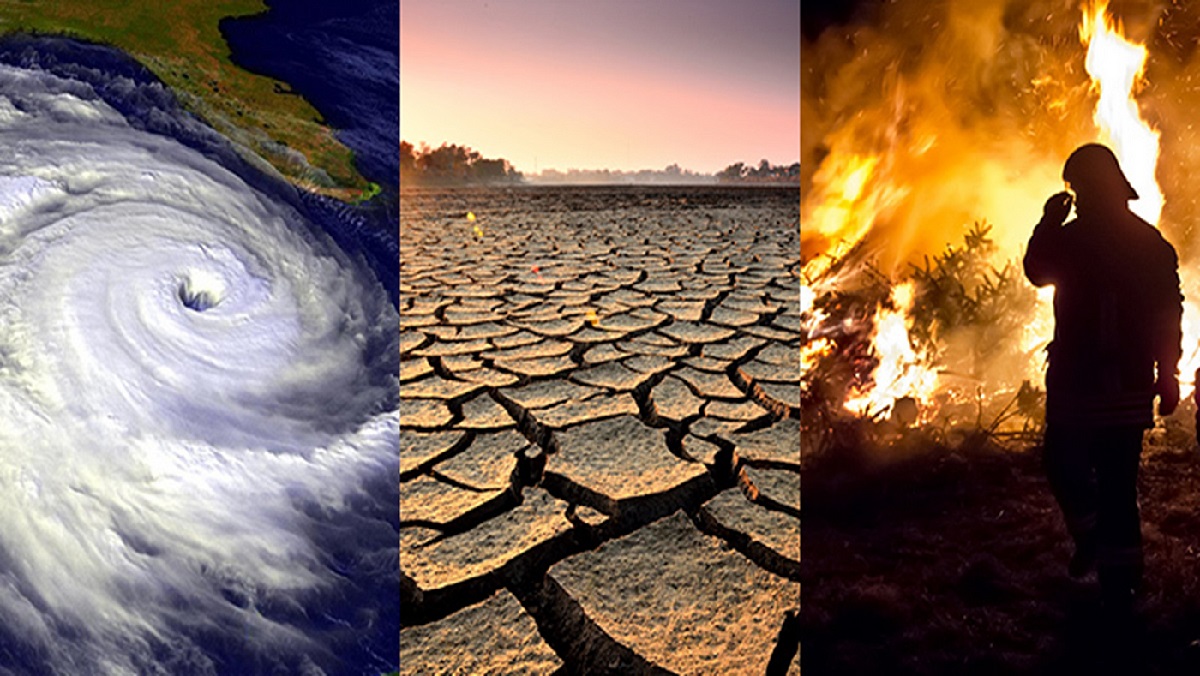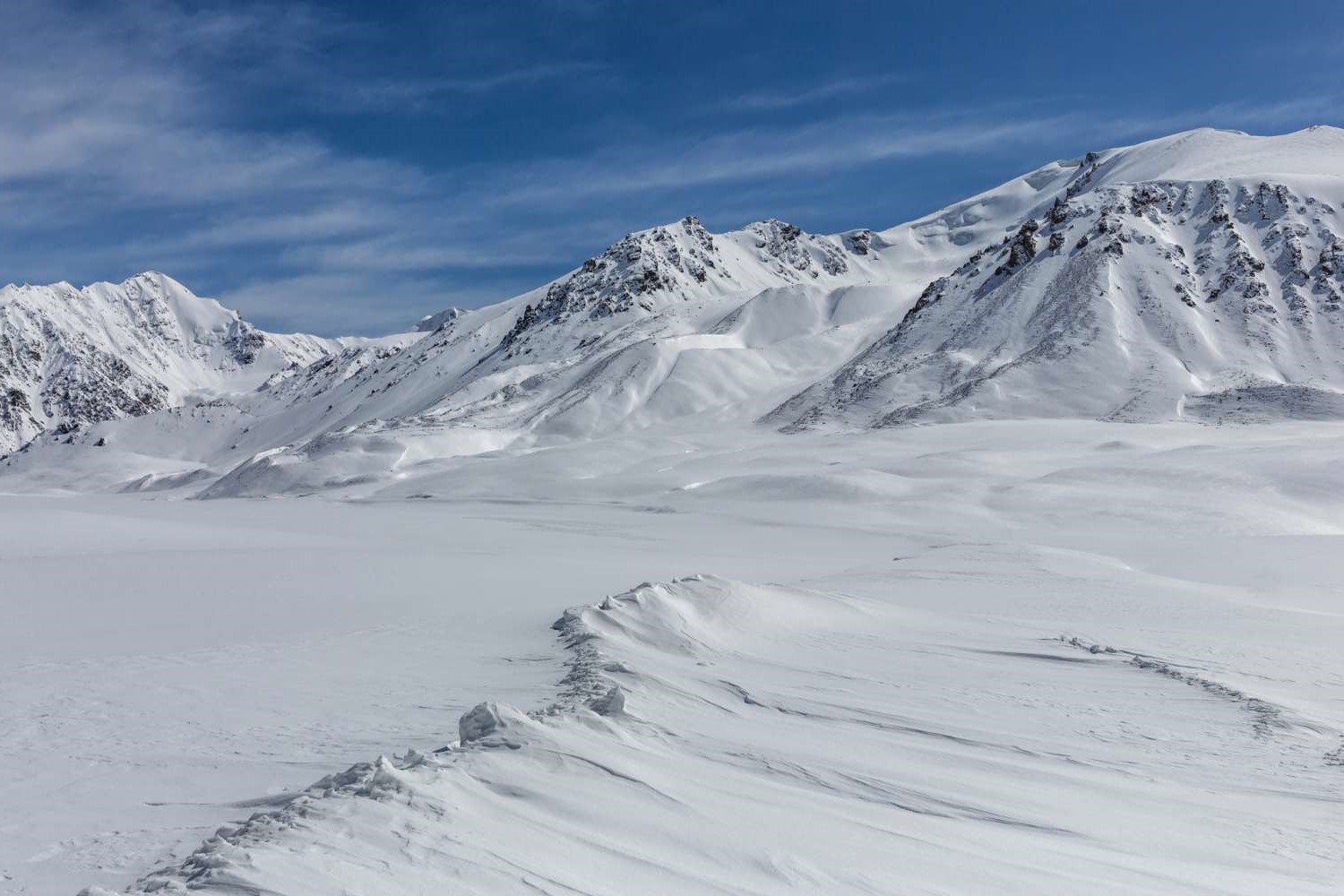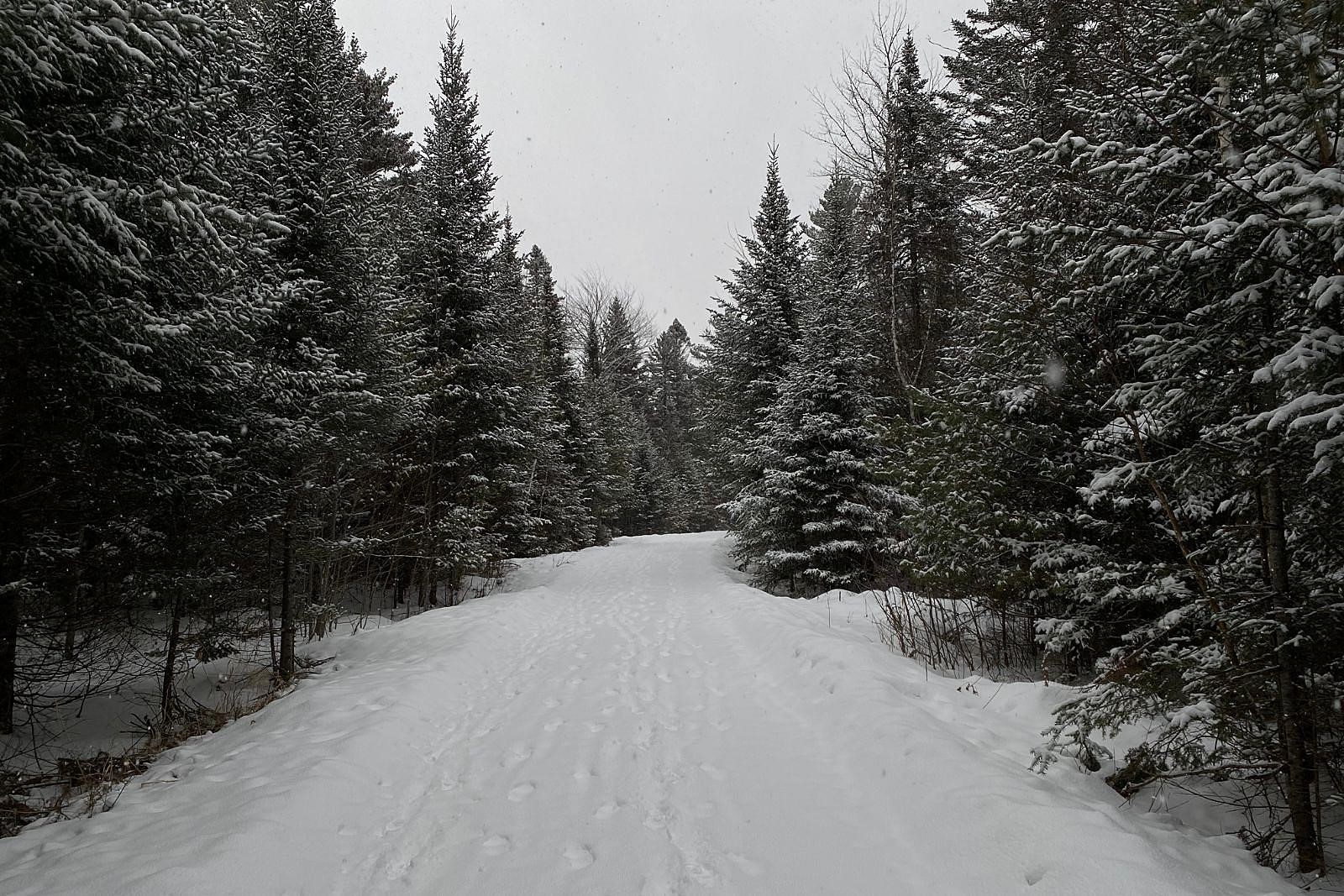Home>Weather and Climate>Exploring The Historical Weather Data: Unveiling The Past Climate Patterns


Weather and Climate
Exploring The Historical Weather Data: Unveiling The Past Climate Patterns
Published: April 15, 2024
Explore historical weather data and uncover past climate patterns with our comprehensive analysis. Gain insights into the weather and climate trends of the past.
(Many of the links in this article redirect to a specific reviewed product. Your purchase of these products through affiliate links helps to generate commission for Temperatures.com, at no extra cost. Learn more)
Table of Contents
Introduction
The study of historical weather data offers a fascinating journey into the past, providing valuable insights into the climate patterns that have shaped our world. By delving into the historical records of temperature, precipitation, wind patterns, and other meteorological phenomena, we can unravel the intricate tapestry of weather patterns that have influenced human civilization and the natural world.
Understanding historical weather data is akin to peering through a window into the past, allowing us to witness the ebb and flow of climate patterns across different epochs. This exploration not only satisfies our curiosity about the weather of yesteryears but also serves as a crucial foundation for comprehending the dynamics of climate change and its potential impacts on our planet.
As we embark on this journey through historical weather data, we will uncover the significance of these records and their implications for our understanding of climate patterns. From the sources of historical weather data to the methodologies for analyzing and interpreting this information, we will navigate through the intricate web of meteorological records to gain a deeper appreciation of the historical climate patterns that have shaped our world.
Join me as we embark on an enlightening expedition into the realm of historical weather data, where each data point holds a story waiting to be told, and each pattern unveils a chapter in the ever-evolving narrative of Earth's climate.
Importance of Historical Weather Data
Historical weather data serves as a treasure trove of invaluable information, offering a panoramic view of past climate patterns and meteorological events. This data is not merely a collection of numbers and observations; rather, it represents a chronicle of Earth's climatic history, holding profound significance for various fields and endeavors. Let's delve into the multifaceted importance of historical weather data:
-
Understanding Climate Trends: Historical weather data provides a comprehensive record of temperature fluctuations, precipitation levels, and extreme weather events over extended periods. By analyzing this data, scientists and researchers can discern long-term climate trends, identifying patterns of change and stability. This understanding is crucial for predicting future climate scenarios and assessing the potential impacts of climate change on ecosystems, agriculture, and human societies.
-
Informing Policy and Planning: Governments, environmental agencies, and urban planners rely on historical weather data to formulate policies and strategies for disaster preparedness, water resource management, and infrastructure development. By examining past weather patterns, decision-makers can anticipate and mitigate the risks associated with natural disasters, such as floods, droughts, and heatwaves, thereby enhancing the resilience of communities and safeguarding public safety.
-
Preserving Cultural and Environmental Heritage: Historical weather data plays a pivotal role in preserving the cultural and environmental heritage of regions around the world. By documenting weather patterns and climatic conditions that have shaped landscapes and ecosystems, this data contributes to the conservation of biodiversity and the preservation of indigenous knowledge related to traditional weather forecasting and agricultural practices.
-
Advancing Scientific Research: Meteorologists, climatologists, and environmental scientists utilize historical weather data to validate climate models, conduct retrospective analyses of extreme weather events, and investigate the interconnectedness of global climate systems. This data serves as a cornerstone for advancing scientific research on climate variability, atmospheric dynamics, and the long-term impacts of human activities on the environment.
-
Educational Insights: Historical weather data offers a rich resource for educational purposes, enabling students and enthusiasts to explore the dynamic nature of Earth's climate and its historical evolution. By engaging with this data, learners gain a deeper appreciation for the complexities of weather patterns and the interconnectedness of natural processes, fostering a sense of environmental stewardship and scientific curiosity.
In essence, historical weather data transcends its role as a repository of meteorological records; it embodies a testament to the intricate interplay of natural forces and human experiences throughout history. Its importance reverberates across disciplines, serving as a cornerstone for informed decision-making, scientific inquiry, and the preservation of our planet's climatic legacy.
Sources of Historical Weather Data
The exploration of historical weather data is made possible through a diverse array of sources that have meticulously documented meteorological observations over the centuries. These sources serve as invaluable repositories of weather-related information, offering a window into the climatic conditions of bygone eras. Let's delve into the multifaceted sources of historical weather data that enrich our understanding of past climate patterns:
-
Archival Records: Historical weather data often resides within the archives of meteorological institutions, governmental agencies, and academic research centers. These archives contain a wealth of handwritten and printed records, including daily temperature readings, precipitation measurements, and detailed accounts of extreme weather events. These meticulously preserved documents provide a tangible link to the weather observations made by early meteorologists and dedicated enthusiasts, offering a glimpse into the meteorological landscape of previous centuries.
-
Ship Logs and Maritime Records: Maritime expeditions and naval voyages have contributed significantly to the collection of historical weather data. Ship logs dating back to the age of exploration contain detailed accounts of weather conditions encountered during sea voyages, including observations of wind patterns, sea surface temperatures, and atmospheric phenomena. These maritime records offer a unique perspective on weather patterns across different oceanic regions and have been instrumental in reconstructing historical climate trends.
-
Diaries and Personal Journals: Throughout history, individuals have documented their daily experiences, including observations of weather patterns, in personal diaries and journals. These firsthand accounts provide valuable insights into localized weather events, seasonal variations, and the impact of climate on daily life. By mining these personal narratives, researchers can glean nuanced details about historical weather phenomena and their influence on human activities and societal dynamics.
-
Instrumental Measurements: The advent of instrumental measurements, such as the use of thermometers, barometers, and rain gauges, has facilitated the systematic recording of weather data. Historical instrumental measurements, preserved in scientific collections and museum archives, offer a quantitative record of temperature, atmospheric pressure, and precipitation dating back several centuries. These measurements, often accompanied by meticulous calibration records, form a cornerstone of historical weather data analysis and contribute to the reconstruction of past climate conditions.
-
Artistic Depictions and Literary Works: Artistic representations of landscapes and natural scenes, as well as descriptions of weather phenomena in literary works, provide supplementary sources of historical weather data. Paintings, drawings, and literary accounts often contain implicit references to weather conditions, seasonal variations, and atmospheric moods, offering a qualitative perspective on historical climate aesthetics and sensory experiences.
In essence, the sources of historical weather data are as diverse as the weather patterns they document. By harnessing these multifaceted sources, researchers and enthusiasts can piece together a comprehensive mosaic of past climate patterns, enriching our understanding of the dynamic interplay between nature and human civilization across the ages.
Analyzing and Interpreting Historical Weather Data
Analyzing and interpreting historical weather data is a meticulous process that involves unraveling the intricate tapestry of meteorological observations to discern meaningful patterns and trends. This endeavor encompasses a blend of scientific methodologies, statistical analyses, and interdisciplinary approaches aimed at extracting valuable insights from the wealth of historical records. Here's a detailed exploration of the methodologies and considerations involved in the analysis and interpretation of historical weather data:
Data Digitization and Standardization
The initial step in analyzing historical weather data often involves digitizing and standardizing the diverse array of records obtained from archival sources, ship logs, personal diaries, and instrumental measurements. This process entails converting handwritten or printed records into digital formats, ensuring uniformity in data representation, and addressing potential discrepancies arising from variations in measurement units and recording conventions.
Quality Control and Validation
Once the data is digitized, rigorous quality control measures are employed to validate the accuracy and reliability of historical weather observations. This involves cross-referencing multiple sources, identifying potential errors or inconsistencies, and applying statistical techniques to identify outliers or anomalies. By ensuring the integrity of the data, researchers can establish a robust foundation for subsequent analyses and interpretations.
Temporal and Spatial Analysis
Temporal analysis of historical weather data involves examining long-term trends, seasonal variations, and cyclical patterns in temperature, precipitation, and other meteorological parameters. Spatial analysis, on the other hand, entails mapping weather observations across geographical regions to discern localized climatic variations and the influence of topographical features on weather patterns. These analyses provide crucial insights into the dynamic nature of historical climate conditions and their spatial heterogeneity.
Statistical Modeling and Trend Identification
Statistical modeling techniques, such as time series analysis and regression modeling, are employed to identify significant trends, abrupt changes, and cyclical variations within historical weather data. These models enable researchers to quantify the magnitude and direction of long-term climate trends, assess the statistical significance of observed changes, and project potential future scenarios based on historical patterns.
Interdisciplinary Contextualization
Interpreting historical weather data goes beyond statistical analyses, necessitating an interdisciplinary approach that contextualizes meteorological observations within broader historical, environmental, and societal frameworks. By integrating historical weather data with cultural records, ecological studies, and historical narratives, researchers can elucidate the multifaceted impacts of climate variability on human societies, ecosystems, and cultural landscapes.
In essence, the analysis and interpretation of historical weather data represent a nuanced blend of scientific rigor, historical contextualization, and spatial-temporal insights. By navigating through this intricate web of data, researchers can unravel the historical climate narrative, shedding light on the dynamic interplay of natural forces and human experiences across different epochs.
Case Studies: Unveiling Past Climate Patterns
Exploring historical weather data through compelling case studies unveils a tapestry of past climate patterns, offering profound insights into the dynamic nature of Earth's climatic history. These case studies serve as windows into distinct epochs, revealing the intricate interplay of natural phenomena and human experiences across diverse geographical regions. Let's embark on a captivating journey through two compelling case studies that illuminate the multifaceted nature of past climate patterns.
Case Study 1: The Little Ice Age in Europe
The Little Ice Age, spanning roughly from the 14th to the 19th century, represents a pivotal period of climatic upheaval in Europe. Historical weather data from this era paints a vivid portrait of prolonged cold spells, erratic weather patterns, and their far-reaching impacts on societies. By analyzing records from instrumental measurements, archival documents, and artistic depictions, researchers have unraveled the chilling narrative of this climatic anomaly.
The meticulous examination of temperature records and agricultural reports reveals a pronounced cooling trend, characterized by harsh winters, shortened growing seasons, and crop failures. These climatic adversities exerted profound socio-economic repercussions, triggering food shortages, population displacements, and societal upheavals. Furthermore, artistic representations of frozen landscapes and frosty winters in European paintings provide a poignant testament to the climatic hardships endured during this epoch.
Case Study 2: Monsoon Variability in South Asia
The historical weather data pertaining to monsoon variability in South Asia offers a compelling narrative of seasonal climatic dynamics and their impact on agrarian societies. By delving into ship logs, diaries, and meteorological records, researchers have unveiled the intricate nuances of monsoon patterns and their influence on agricultural practices and cultural traditions.
The analysis of maritime records and personal diaries reveals the oscillations of monsoon winds, ranging from bountiful rainy seasons to prolonged droughts, shaping the agricultural rhythms and livelihoods of communities across the Indian subcontinent. These historical accounts provide a nuanced understanding of the delicate balance between monsoon variability and the sustenance of agrarian societies, underscoring the resilience and adaptability of human communities in response to climatic fluctuations.
In essence, these case studies serve as compelling testaments to the diverse manifestations of past climate patterns, enriching our understanding of the intricate interplay between weather dynamics and human civilizations. By unraveling these historical narratives, we gain a deeper appreciation for the resilience of societies in the face of climatic adversities and the enduring imprint of past climate patterns on cultural landscapes and societal trajectories.
Implications for Understanding Climate Change
The exploration of historical weather data holds profound implications for enhancing our understanding of climate change and its far-reaching impacts on the planet. By delving into the annals of meteorological records and unraveling the historical climate narrative, researchers and policymakers can glean invaluable insights that inform our perspectives on contemporary climate dynamics and future projections. Here's a detailed exploration of the implications of historical weather data for understanding climate change:
Read more: Exploring Colorado’s Winter Weather Patterns
Unveiling Long-Term Trends
Historical weather data serves as a crucial lens through which we can discern long-term climate trends and variations. By analyzing temperature records, precipitation patterns, and extreme weather events spanning centuries, researchers can identify shifts in climatic norms and the magnitude of temperature fluctuations. This historical context enables us to contextualize contemporary climate change within the broader framework of natural climate variability, shedding light on the unprecedented nature of current warming trends and their implications for global ecosystems.
Assessing Climate Sensitivity
The meticulous examination of historical weather data facilitates the assessment of climate sensitivity, elucidating the responsiveness of the Earth's climate system to external forcings. By scrutinizing past climate patterns and their drivers, including solar variability, volcanic eruptions, and greenhouse gas concentrations, researchers can gauge the degree to which the climate has responded to natural and anthropogenic influences. This historical perspective enhances our understanding of the complex interplay between natural climate drivers and human-induced perturbations, informing climate sensitivity estimates and future climate projections.
Validating Climate Models
Historical weather data serves as a critical benchmark for validating climate models and simulations, enabling researchers to assess the accuracy and robustness of model projections against observed historical trends. By comparing model outputs with historical climate patterns, scientists can refine model parameters, improve predictive capabilities, and enhance the fidelity of future climate projections. This iterative process of model validation and refinement, anchored in historical data, strengthens the scientific foundation for understanding the intricacies of climate change dynamics.
Informing Adaptation Strategies
The insights gleaned from historical weather data offer valuable guidance for formulating adaptation strategies to mitigate the impacts of climate change. By examining past instances of extreme weather events, shifts in precipitation patterns, and alterations in regional climate regimes, decision-makers can anticipate potential vulnerabilities and devise adaptive measures to enhance the resilience of communities, infrastructure, and natural ecosystems. This historical perspective empowers us to draw upon the adaptive strategies employed by past societies in response to climatic adversities, fostering a proactive approach to climate resilience in the face of contemporary challenges.
Fostering Public Awareness
The narrative woven by historical weather data serves as a powerful tool for fostering public awareness and engagement with the complexities of climate change. By elucidating the historical context of climate variability and the enduring impacts of past climate patterns on human societies, ecosystems, and cultural landscapes, historical weather data fosters a deeper appreciation for the interconnectedness of climate dynamics and societal well-being. This heightened awareness nurtures a sense of environmental stewardship and collective responsibility, catalyzing informed actions to address contemporary climate challenges.
In essence, historical weather data transcends its role as a repository of past meteorological observations; it embodies a cornerstone for advancing our understanding of climate change and its implications for the future of our planet. By embracing the insights gleaned from historical climate narratives, we can navigate the complexities of contemporary climate dynamics with greater clarity and foresight, fostering a sustainable and resilient trajectory for the planet and its inhabitants.
Conclusion
In conclusion, the exploration of historical weather data unveils a rich tapestry of past climate patterns, offering profound insights into the dynamic interplay of natural forces and human experiences across different epochs. The multifaceted importance of historical weather data transcends disciplinary boundaries, serving as a cornerstone for understanding climate trends, informing policy and planning, preserving cultural and environmental heritage, advancing scientific research, and nurturing educational insights. By harnessing diverse sources of historical weather data, including archival records, ship logs, personal diaries, instrumental measurements, and artistic depictions, researchers and enthusiasts can piece together a comprehensive mosaic of past climate patterns, enriching our understanding of the intricate dynamics of Earth's climatic history.
The meticulous analysis and interpretation of historical weather data entail a blend of scientific methodologies, statistical analyses, and interdisciplinary contextualization, unraveling the historical climate narrative and shedding light on the enduring imprint of past climate patterns on cultural landscapes and societal trajectories. Compelling case studies, such as the Little Ice Age in Europe and monsoon variability in South Asia, offer captivating windows into distinct epochs, illuminating the multifaceted manifestations of past climate patterns and their impacts on human societies and ecosystems.
Moreover, the implications of historical weather data for understanding climate change are profound, as this exploration unveils long-term trends, assesses climate sensitivity, validates climate models, informs adaptation strategies, and fosters public awareness. By contextualizing contemporary climate dynamics within the broader framework of natural climate variability, historical weather data enhances our perspectives on climate change and fosters a proactive approach to climate resilience in the face of contemporary challenges.
In essence, historical weather data serves as a testament to the enduring resilience of human societies in the face of climatic adversities and offers a lens through which we can navigate the complexities of contemporary climate dynamics with greater clarity and foresight. As we continue to unravel the historical climate narrative, each data point and pattern unveils a chapter in the ever-evolving story of Earth's climate, fostering a deeper appreciation for the interconnectedness of climate dynamics and the collective responsibility to safeguard the planet for future generations.











